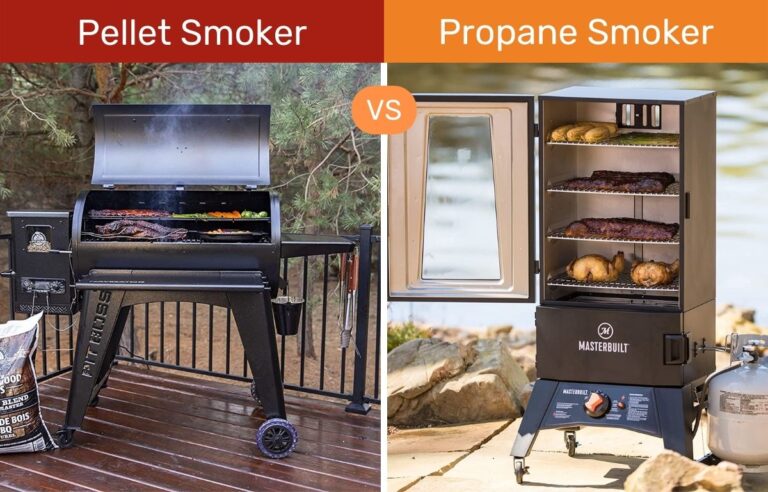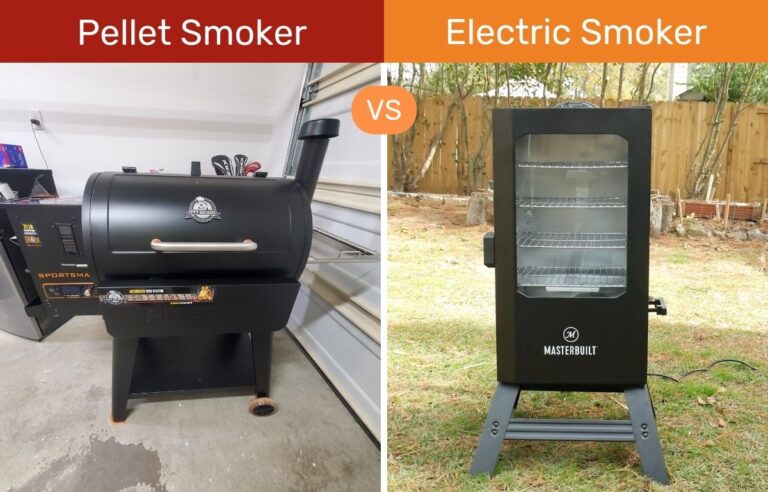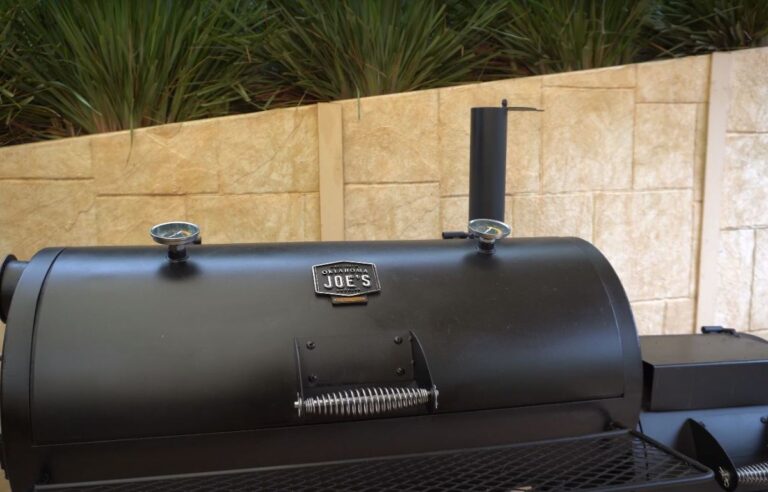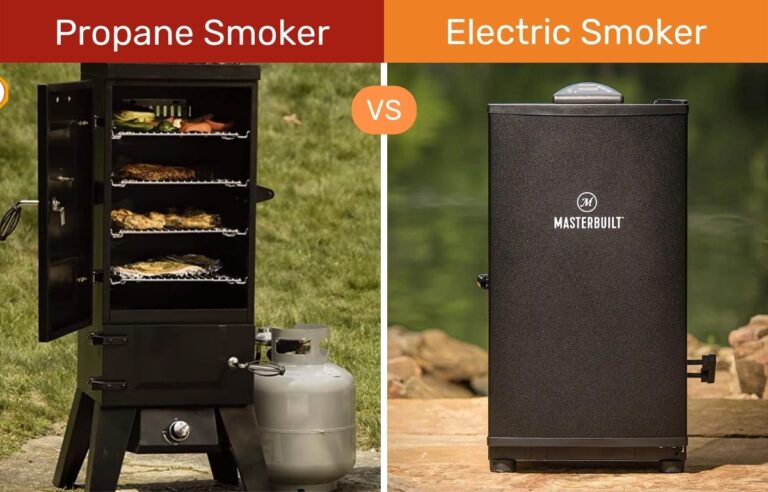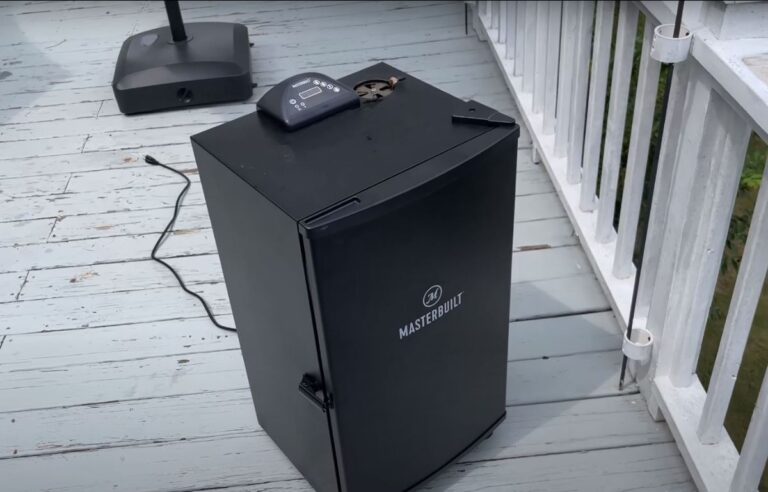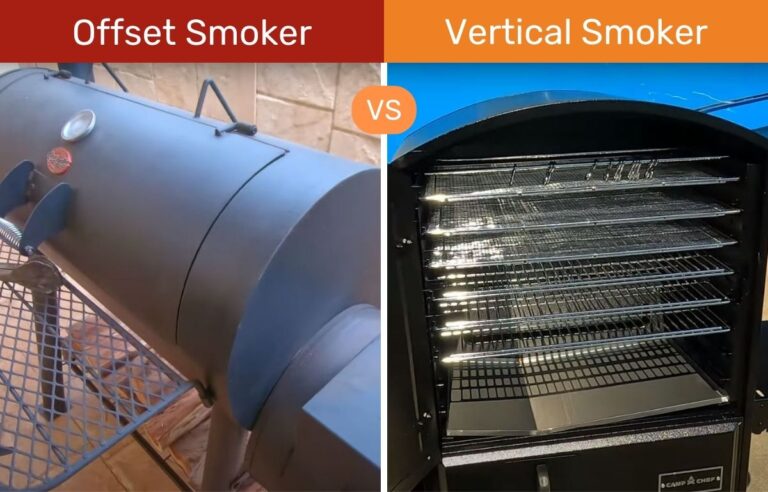Reverse Flow Smoker vs Offset: A Detailed Comparison
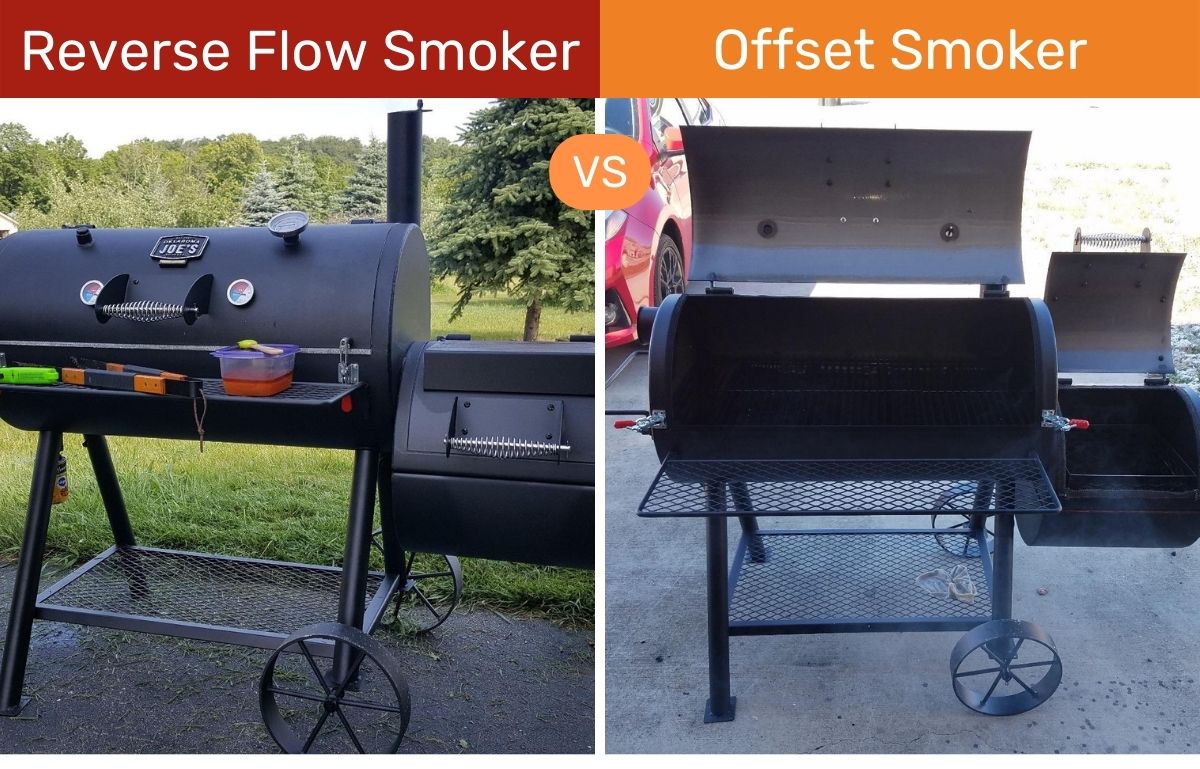
FaveGrills is reader-supported. If you purchase by clicking a link on this page, we may earn an Affiliate Commission at no extra cost. Learn more
Offset and reverse flow smokers are two of the most popular yet similar outdoor cooking appliances in the BBQ community.
Due to their similar shape, many people get confused in understanding them and don’t know which one to choose for achieving their regular BBQ tasks.
In this guide, I have comprehensively compared Reverse Flow Smoker vs Offset, highlighting their major distinctions, pros and cons, and which one is more suitable for you and why.
Reverse Flow Smoker vs Offset – A Quick Overview
A reverse flow smoker differs from an offset one in terms of structure, heat distribution, components, cooking styles, and preheating duration.
For example, in terms of structure, a reverse flow smoker has a chimney, through which smoke or heat escapes, on the same side of the firebox where you burn wood and charcoal, while an offset smoker has a chimney on the opposite side of the firebox.
When it comes to heat distribution, the heat inside a reverse flow smoker moves below the baffle plate and then reaches the cooking grates to cook food, whereas, in an offset smoker, the heat directly enters the cooking chamber.
Furthermore, a reverse flow smoker has an additional baffle plate that helps heat and smoke move in a reverse direction before cooking the meat, while an offset smoker has no metal plate inside its structure.
If I talk about the cooking styles, reverse flow smokers are often more suitable for low and slow smoking, but an offset one can help you cook your food in different ways, such as smoking and grilling.
Lastly, an offset smoker will preheat to the required temperature quicker than a reverse flow one because, in a reverse flow smoker, the heat first goes under the baffle and then reaches the cooking grates attached above.
Working Of A Reverse Flow Smoker
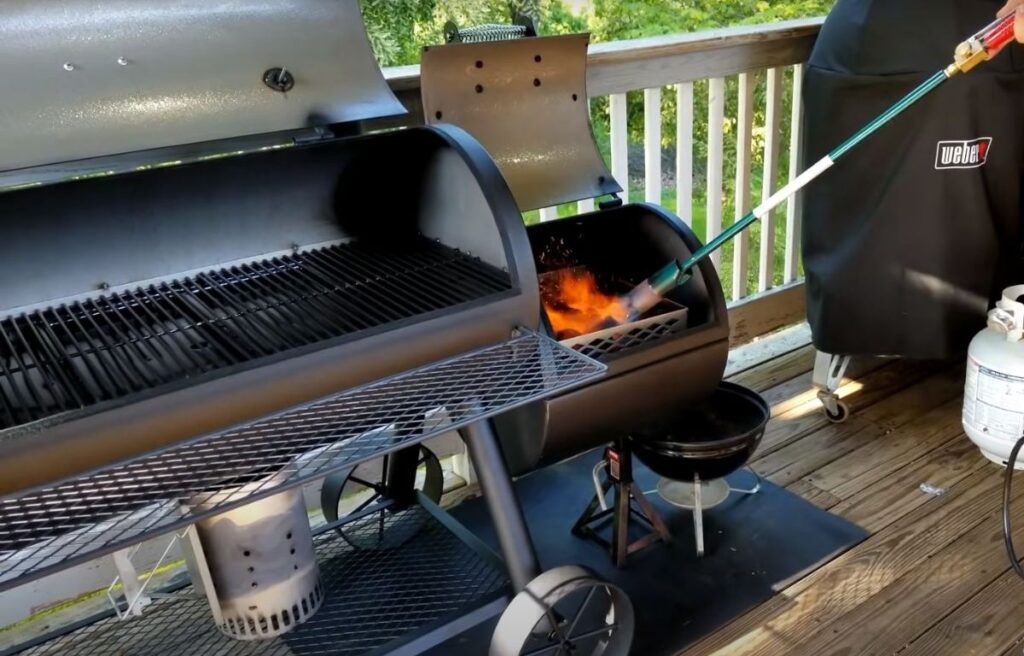
When you burn charcoal with wood in the firebox, it produces heat and smoke, which then go under a special plate called a baffle inside the cooking chamber.
This baffle is situated slightly above the firebox, which is why the heat and smoke go beneath the plate first, and the plate then guides them to rise and move towards where the food cooks.
After that, the heat and smoke say goodbye to the cooking chamber and exit the smoker through a chimney located on the same side of the firebox.
Working Of An Offset Smoker
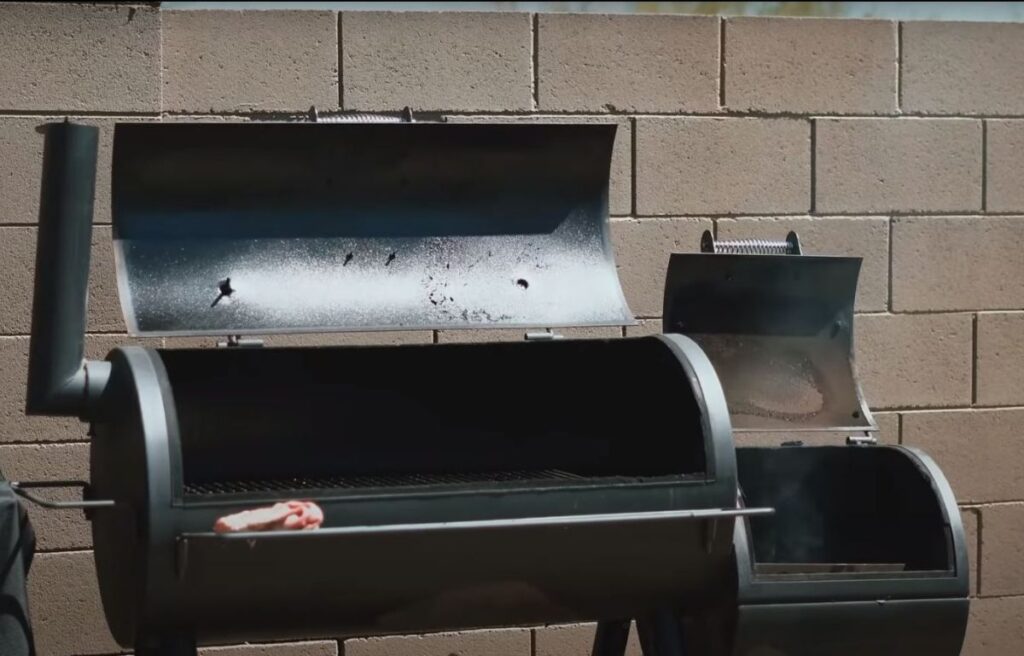
The initial step of using an offset smoker is the same in which you need to ignite the charcoal and wood inside the firebox.
The significant difference occurs when the heat and smoke generated move directly into the cooking chamber located next to the firebox.
The heat and smoke quickly interact with the food placed on the cooking grate and then escape through a chimney provided on the opposite side of the firebox.
To conclude, in a reverse flow smoker, the heat and smoke have to cover a longer distance before reaching food, whereas, in an offset smoker, they reach the food items relatively quickly.
Top Tip by FaveGrills
Whether using an offset or reverse flow smoker, always try to clean it after each cooking session to keep it robust and maintain its cooking performance. Also, don’t throw charcoal after cooking, as you can reuse it if you store it properly.
Head To Head Detailed Comparison – Offset Vs Reverse Flow Smoker
So, after a quick overview of how these two smokers differ from each other, let’s move toward a detailed comparison in which I have deeply differentiated their different features.
Design Difference
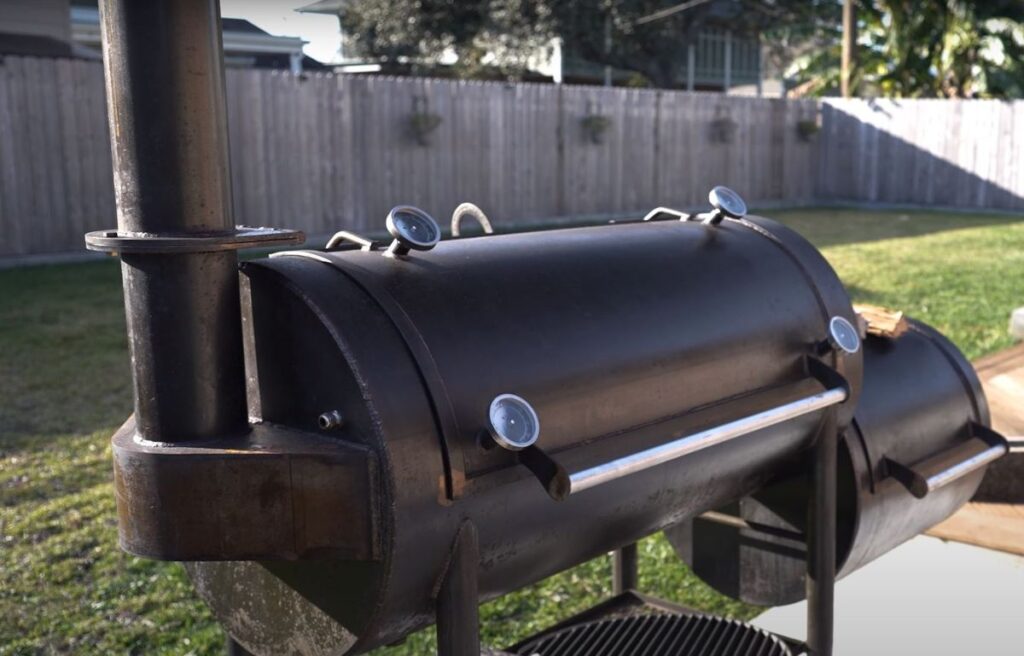
The structure of an offset and reverse flow smoker is what initiates the debate of reverse flow vs offset smoker because they have a pretty similar shape. But I can help you understand both of them easily.
There is one major difference that sets these smokers apart, which is the chimney’s location.
As mentioned before, the chimney is often located on the opposite side of the firebox in an offset smoker. In contrast, a reverse-flow smoker has a chimney on the same side as the firebox.
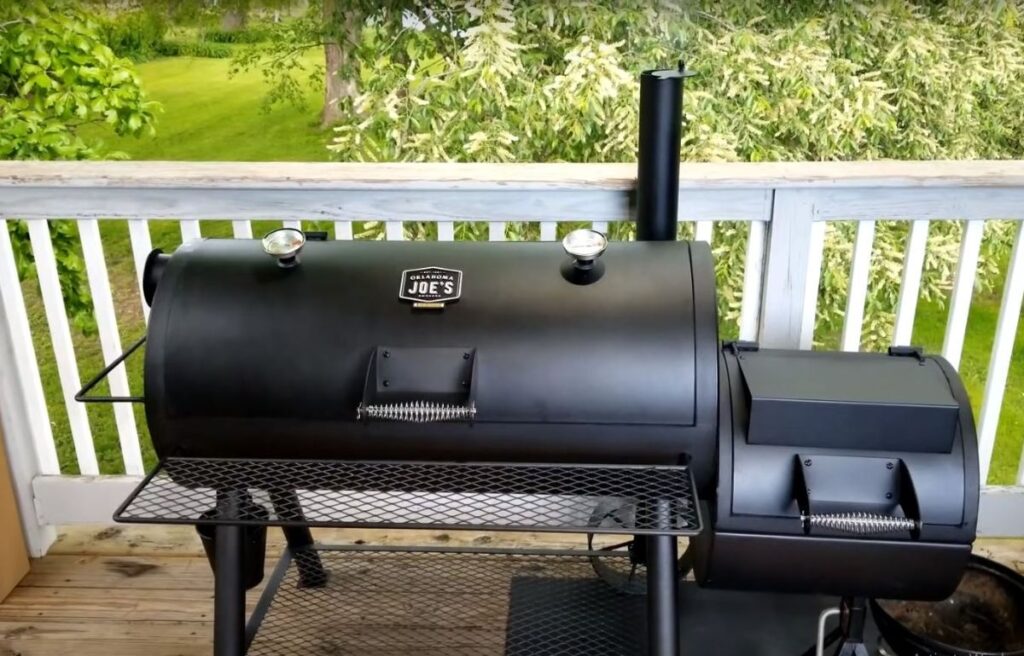
It might look simple, but this design significantly affects how heat and smoke circulate within the cooking chamber and differentiates these smokers.
Components
A reverse flow smoker has an extra component, a baffle plate, included in its structure. This plate is one of the most notable differences between reverse flow and offset smokers.
In a reverse flow smoker, the baffle plate is positioned inside the cooking chamber, below the cooking grates. It is there to guide heat and smoke to travel in a reverse direction before they start cooking and infusing your meat with flavor.
On the other hand, an offset smoker lacks this baffle plate, allowing the heat and smoke to interact directly with your food items.
Working Techniques
It is another prominent difference that you’ll encounter between these two smokers.
In a reverse flow smoker, when you have started the fire, the heat and smoke from the firebox first go underneath the baffle plate, then go above and take reverse to reach the food placed over the cooking grate.
In contrast, offset smokers allow the heat and smoke to directly reach the cooking grate after they come out of the firebox.
However, the heat regulation on both smokers is pretty similar in that you have to adjust the air intake and exhaust vents. By adjusting these vents, you can control the flow of air and the temperature inside the smoker.
Preheating Duration
An offset smoker will preheat to your required temperature quicker than a reverse flow one because of its more direct heat path.
In an offset smoker, the heat and smoke have to cover a shorter distance from the firebox to the cooking chamber, allowing it to reach the desired temperature faster.
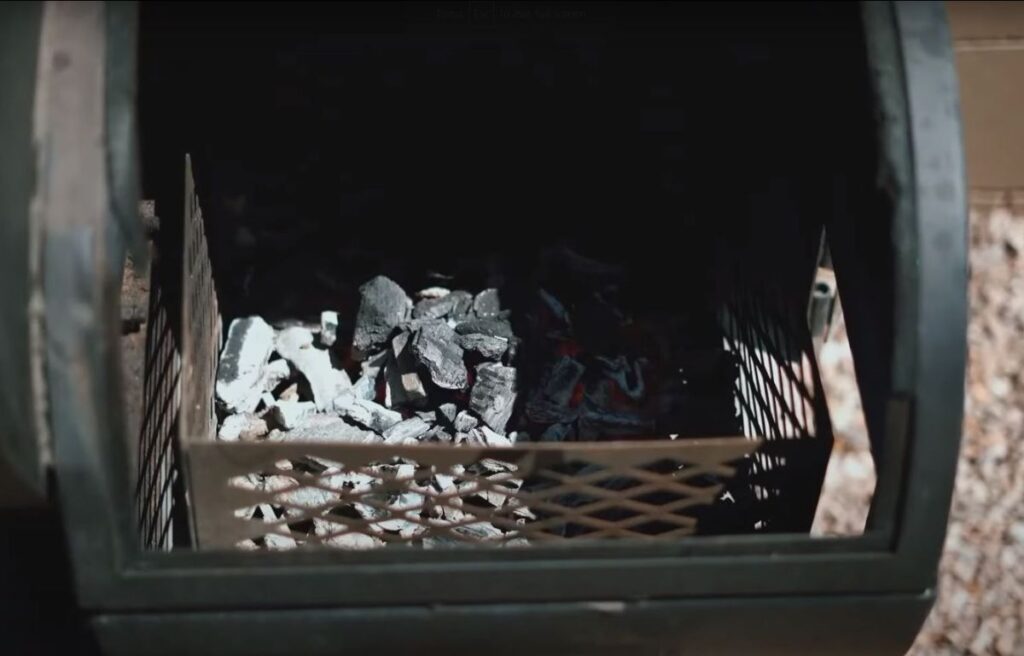
On the other hand, in a reverse-flow smoker, the heat and smoke first go under the baffle and then reach the cooking area, which can slightly extend the preheating time.

So, in short, the presence and absence of a baffle directly impact the preheating duration. A smoker with this plate will take longer than the one without it.
Cooking Ways
If you are using an offset smoker, you can use it for both smoking and grilling by applying different techniques.
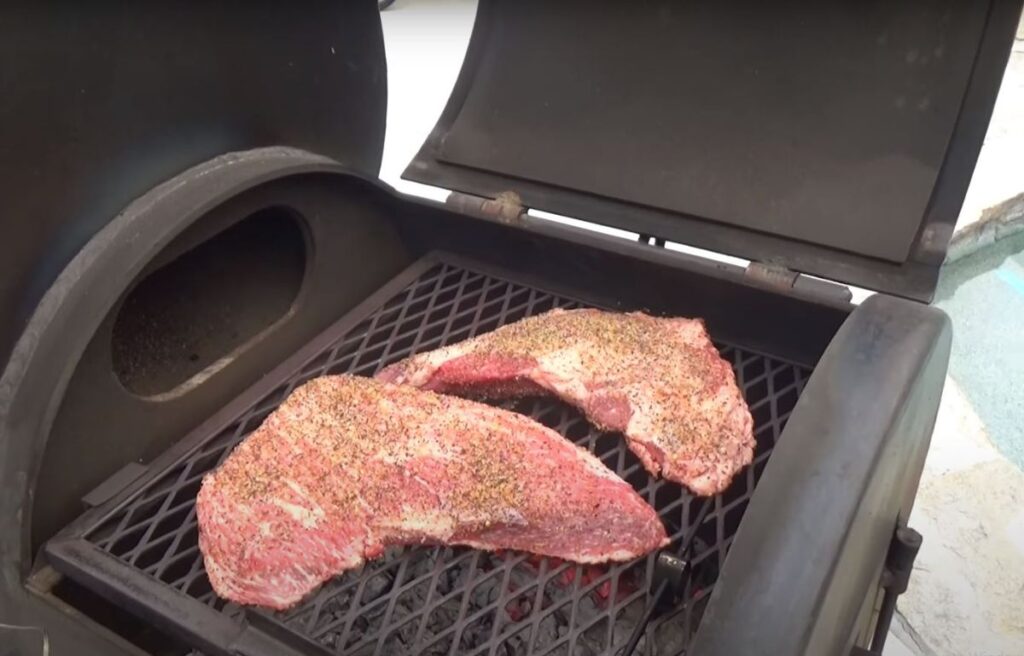
For example, if you want to grill, you can simply place your food directly over the hot coals in the firebox or start the fire below the cooking grates.
However, reverse flow smokers are specifically built for low and slow smoking due to the presence of a metal plate in their structure.
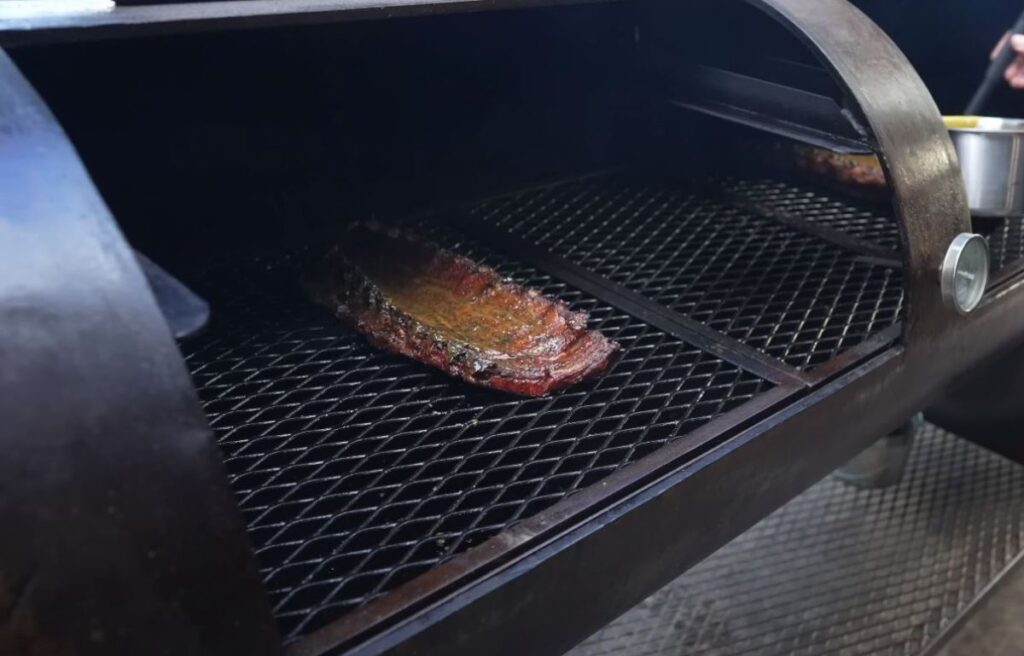
Now, if the plate is removable, you may get to cook with direct heat, but if it is fixed, you will be able to cook low and slow only.
Smoke Flavor
The meat you cook on the reverse flow smoker has a unique flavor that you may not achieve when cooking your food items on an offset smoker.
Instead, an offset smoker will offer a typical and authentic smoky taste that you often get from a regular charcoal grill or smoker.
The reason is that a reverse flow smoker has a unique design makes the smoke move slowly until it penetrates the meat.
In other words, the meat gets extra time to soak up the smoky flavor generated by wood and charcoal, making it exceptionally flavorful from each bite.
Cleaning Process
When it comes to ease of cleaning, an offset smoker is generally easier to clean compared to a reverse flow smoker.

In an offset smoker, you can easily remove ashes from the firebox and clean out any leftover charcoal or wood debris. With regular cleaning, the cooking grates can also be cleaned without much hassle.
In contrast, a reverse flow smoker has additional components like the baffle plate, which can collect plenty of grease and residue during cooking. Cleaning the baffle plate and the smoker’s interior might be more annoying and require more time.
In summary, while both types of smokers require regular maintenance, offset smokers tend to be more straightforward to clean due to their simpler design and fewer internal components.
Here’s a detailed video on how to clean your reverse-flow smoker.
Are There Any Similarities Between Offset and Reverse Flow Smokers?
While offset and reverse flow smokers have several differences, they also have some similarities that I have highlighted below.
Firstly, both types of smokers are often made from durable materials like steel, which helps retain heat and withstand higher cooking temperatures.
Secondly, the way you control the temperature in these smokers is quite similar. Both require adjusting the intake and exhaust vents to manage the airflow, which helps regulate the heat inside the cooking chamber.
Another similarity these two smokers share is that they offer ample cooking space. On average, you can expect 500 sq inches or more cooking space from these smokers.
Furthermore, they both require charcoal to generate heat for cooking food items and wood chunks to infuse them with smoky flavor.
Lastly, they weigh too much and have bigger dimensions, which can make their portability challenging, and you will need plenty of space in your backyard to accommodate these smokers.
Advantages Of Offset Smokers
- Versatility: Using this smoker, you can cook your food items under different temperature conditions.
- Smoke Flavor Infusion: They are perfect for cooking different food items with unique, delightful, and intense smoky flavors.
- Easy Cleaning: Compared to reverse flow smokers, the offset ones create less mess, making their cleaning process easier and quicker.
- Large Cooking Area: Offset smokers have plenty of cooking space on which you can cook multiple food items at once.
Disadvantages Of Offset Smokers
- Heavy: They weigh too much compared to other smokers and grills, so you can’t easily take them outside when going on a picnic.
- Not The Ideal Choice For Beginners: It will take you some time before you start using this smoker like a pro because regulating heat through vents isn’t that easy.
Advantages Of Reverse Flow Smokers
- Even-Heat And Smoke Distribution: Reverse flow smokers offer consistent temperature and even smoke distribution across the cooking chamber, ensuring evenly cooked foods from all sides with a delightful smoky flavor.
- Constant Cooking Environment: They maintain a steady cooking temperature, making it easier to achieve perfect results without continuous adjustments. This feature is especially beneficial for long smoking sessions and great for beginners, too.
- Perfect For Low And Slow Smoking: These smokers are ideal for those who prefer cooking low and slow to cook their meat to perfection.
Disadvantages Of Reverse Flow Smokers
- Not Versatile: They might not be suitable for cooking food at different temperatures because the heat has to follow a long path, which can limit them from reaching higher cooking temperatures.
- Heavyweight: Like the offset ones, these smokers also weigh too much, which is why you can’t quickly move them from one place to another.
- Requires In-Depth Cleaning: They tend to create more mess in both the firebox and cooking chamber because the heat and smoke travel very slowly inside the smoker. As a result, you will need to spend more time cleaning these smokers.
Who is the Winner? Head-to-head Summary
Let’s share a short quick summary of the relative winners in a head-to-head comparison.
| Features | Relative Winner |
|---|---|
| Cooking styles | Offset Smokers |
| Temperature Control | Both |
| Cooking Chamber | Both |
| Cleaning | Offset Smokers |
| Heat Distribution | Reverse Flow Smokers |
Which One Is Ideal For You? Final Thoughts
Choosing between an offset and a reverse flow smoker depends on your requirements and preferences, including your cooking experience, style, etc.
If you have some knowledge about using a charcoal smoker and prefer a versatile outdoor cooking device that can smoke and grill, going with an offset smoker is a suitable option.
On the other hand, a reverse flow smoker is an excellent choice for experienced BBQ lovers looking for a smoker built explicitly for low and slow-cooking sessions.
For a detailed comparison, go through this productive guide to understand which smoker will be more suitable for your cooking requirements and why.
Your Opinion is Valuable to Us
So, which smoker would you like to invest in and why? Share your pick, suggestions, and queries in the comments box below.
Frequently Asked Questions
How frequently should wood be added to an offset smoker?
You can add wood after 30 minutes to 1 hour, but it depends on the smoker’s model, the type of meat, and the intensity of smoke you prefer.
Do reverse flow smokers require more time to preheat compared to offset smokers?
Yes, they require more time to preheat because the heat first goes under the baffle plate and then reaches the cooking area.

